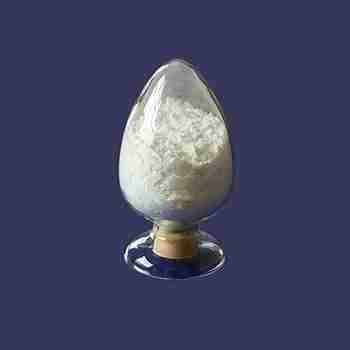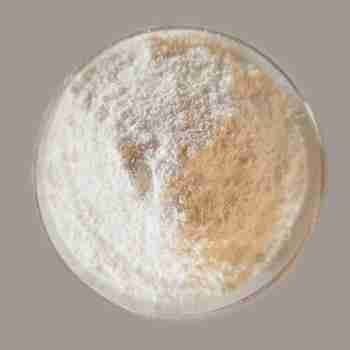L-Alanyl-L-Glutamine CAS 39537-23-0
Chemical name: L-Alanyl-L-Glutamine
Appearance: White crystalline powder
Assay: 98.5%min
Sample: Available
发送询盘
Description
Quick Details
Chemical Name: L-Alanyl-L-Glutamine; Alanyl-glutamine
CAS No.: 39537-23-0
Molecular Fomula: C8H15N3O4
Molecular weight:?217.22
Appearance:?White crystalline powder
Assay: 98.5%min
Typical Properties
Item
Specifications
Appearance
White or off-white crystal or crystalline powder
Identification
?Chromogenic reaction: positive reaction
HPLC: Under the content determination of record chromatograph chart, the main peak of retention time of test sample solution should be consistent with the main peak retention time of the reference substance solution
?Infrared absorption spectrum of the product shall be consistent with the reference substance of the map.
Specific rotation
+9.5?? -+11
Clarify and color
Solution should be clarified, such as turbidity compared with 1 turbidity standard solution may not be thicker
Heavy metals
??10ppm
PH
5.0-6.5
Loss on dry
??0.5%
Residue on ignition
??0.1%
Fe
??0.001%
Arsenic
??0.0001%
Sulfate
??0.02%
Chloride
??0.02%
Ammonium salt
??0.08%
Related substances
Cyclo-L-anayl-L-glutamine??0.2%
Cyclo-L-anayl-L-Glutamyl??0.04%
L-pyroglutamyl-L-amine??0.15%
L-?L-pyroglutamic??0.05%
D-ananyl-L-Glutamine??0.05%
L-ananyl-L-Glutamine??0.5%
Any unspecified impurity??0.1%
Any unspecified total impurity??0.1%
Residual solvent
Methanol ??3000ppm
Toluene??890ppm
Ethanol??5000ppm
Tetrahydrofuran??720ppm
Bacterial endotoxin
??0.05EU/mg
Assay (on a dried basis)
??98.5%
Microbial limit test
Total aerobes count ??1000cfu/g
Mold &Yeast??100cfu/g
Escherichia coli: every 1g may not be detected
?
Usage:
Glutamine substitute used in mammalian cell culture medium
Used as the raw material of cosmetics.
Packaging and Shipping
Packing: 20kg/carton drum by air or by sea or according to client??s demand.
| 5 |
|
0 |
| 4 |
|
0 |
| 3 |
|
0 |
| 2 |
|
0 |
| 1 |
|
0 |
- 2
- 2-diallylpent-4-en-1-amine
- 4
- 95-16-9
- Ammonium sulfamate
- Benzothiazole
- cas:67889-00-3ح2
- cas:83524-75-8 | pigment black 32
- cas:928836-00-4 | 2
- cas:932745-70-5 | 4
- Chemical Minerals
- Coconut diethanolamide
- Daily Chemicals
- discount
- for sale
- General pvc resin
- hexyl D-glucoside
- in stock
- Lauramidopropyl betaine
- LAURIC ACID MONOETHANOLAMIDE
- Petroleum Additives
- Plasticiser
- Ploymers
- price
- PVC
- quotation
- Raw Materal
- Remove term: Petroleum Additives Petroleum Additive
- SODIUM ETHYL 2-SULFOLAURATE
Related Products
Chemical Name: Quercetin-3-O-sophoroside
CAS No.: 18609-17-1
Molecular Formula: C27H30O17
Molecular Weight: 626.52
Hydroxyproline is a non-essential amino acid divided from another amino acid called proline. It is created by the communication of proline with ascorbic acid vitamin C. This process produces a hydroxyl team bound to a hydrogen-oxygen particle, which is affixed to a carbon particle of proline as well as converted to hydroxyproline.Trans-4-hydroxy-l-proline is an optically energetic form of 4-hydroxyproline with l-trans setup. It can be used as human metabolite, plant metabolite and also computer mouse metabolite. It is an tautomer of trans-4-hydroxy-l-proline zwitterions.
Chemical Name: Zinc citrate
Synonyms: Zinc citrate trihydrate
CAS No.: 546-46-3
Molecular Formula: C6H8O7Zn
Molecular Weight: 257.5
Appearance: White powder
Chemical Name: Dehydrocholic acid
Synonyms: Acide dehydrocholique; Triketocholanic acid
CAS No.: 81-23-2
Molecular Formula: C24H34O5
Molecular Weight: 402.53
Appearance: Powder
Chemical Name: Choline salicylate
CAS No.: 2016-36-6
Molecular Formula: C12H19NO4
Molecular Weight: 241.28
Appearance: Red-Brown Crystal
Chemical Name:?UDP-glucuronic acid
CAS No.: 2616-64-0
Molecular Fomula: C15H22N2O18P2
Molecular weight: 580.28
Appearance: Solid
Assay: 98%
Chemical Name:?UDP-Glucuronic Acid Trisodium
CAS No.: 63700-19-6
Molecular Fomula: C15H23N2NaO18P2
Molecular weight: 604.28
Appearance: Solid
Assay: 98%
Chemical Name: Ammonium Iron(II) Sulfate
Synonyms: Diammonium iron bis(sulphate); iron (ii) ammonium sulfate
CAS No.: 10045-89-3
Molecular Formula: FeH5NO4S
Molecular Weight: 170.95
Copper acetate peptide, also known as blue copper peptide. Copper peptide, also known as tripeptide in Chinese; Glycyl-L-histomyl-L-lysine. Peptide is a small molecule protein composed of amino acids, which are more easily absorbed by the skin and have more significant effects. It was first isolated from human plasma in 1973 and was discovered to have wound repair function in 1985. In 1999, researchers believed that copper peptide and its copper repair products can serve as activators of tissue remodeling, and it is also a signaling peptide, Promote the degradation of a large amount of collagen aggregates outside scars, the synthesis of normal collagen in the skin, the generation of elastin, proteoglycans, and glucosamine glycans, the growth rate and migration of different cell types, anti-inflammatory, and antioxidant responses.
Ectoine is a naturally occurring osmoprotectant, a cyclic amino acid derivative that offers exceptional cell-stabilizing properties. Highly valued in cosmetics and pharmaceuticals, it enhances product efficacy by maintaining cell integrity under various environmental stresses.
Coenzyme A sodium salt hydrate (CAS 55672-92-9) is an important biologically active substance.
Appearance: Usually white or off-white powder. Solubility: Easily soluble in water, forming a clear solution in water.
Function: In the body, coenzyme A sodium salt hydrate is an important coenzyme that participates in a variety of biochemical reactions. It plays a key role in the metabolism of fatty acids, promoting the activation and oxidative decomposition of fatty acids. It participates in the tricarboxylic acid cycle and provides energy for cells. It is also important for the metabolism of certain amino acids.
Application: Commonly used in biochemistry and molecular biology research as a cofactor for enzyme reactions.
In the field of medicine, it may be used in the treatment or adjuvant treatment of certain diseases.
Chemical Name: Imazalil Sulfate
CAS No.: 58594-72-2
Molecular Formula: C14H14Cl2N2O.H2SO4
Molecular Weight: 395.26
Appearance: Solid



















Reviews
There are no reviews yet.